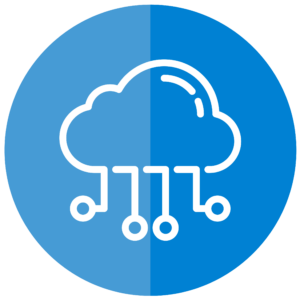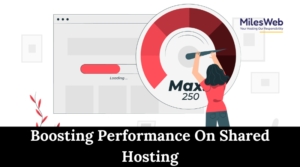Selecting the best tech stack for web development — Here is When Development Decisions Should Not Be Brain-storm Based
Your first major technical decision after you launch a new digital product is not the UI or Database schema; it’s picking your tech stack. You are going to pick technology now — that technology will define how scalable and performant your product can be further, the cost-efficiency it is going to run, and where this stack will help you grow. And in this day and age where web development technologies evolve at an ever increasing rate, that decision is more important than ever. Read blog 1 for what to do to take business from zero to one.
Picture of your dream house If you do something you’d hire a general contractor, would you fill your dream house with random materials and hope they stick? Absolutely not. You will do your research and maybe even hire an architect to compare between several options but most importantly for your climate; design & budget. It is the same for choosing the best tech stack for web development — it is the ground digital roots that underpins your entire business.
Here in this article, we will discuss how to select the best technology for performance and scalability, best programming languages choosing the right framework comparison and mitigation strategies for future dimensional increment in your software development. Read blog 1 for what to do to take business from zero to one. Read blog 2 for why you need custom software.
The Need of the best tech stack for web development
Initially, many businesses go with off the shelf software but eventually end up scaling past them. (Read How Businesses Outgrow Off-The-Shelf Software here) Without any customer-focused it will not be a customized product — it will always require the clean code and scalable tech stack in line with business goals and customer needs.
An unfortunate decision at the get-go results in performance slowness, cost escalating maintenance fees & holes of security all the way to the worst case complete rebuild. On the flip side, a scalable tech stack for development might be flexible, maintainable but not scale as well. Read blog 2 for why you need custom software.
Tech Stack Explained
Tech Stack is a combination of tools, frameworks and languages that are used to create code for an internal or external software application. Usually it consists of:
- Frontend technology (what users see and interact with)
- Back end technologies (the server-side logic and the database interactions)
- Development and DevOps Tools for the full stack developer tools (kit that covers both layers for development, ops)
Let’s dig deeper
Frontend and Backend Technologies: The Stack in Layers
FrontEnd Technologies
They are HTML/CSS and JavaScript frameworks,React.js, Vue.jsor Angular. In choosing the right framework, pay attention to goals such as:
- Responsiveness
- Cross-device compatibility
- Developer bento and community
- Performance optimization
Default in my mind is SPA to React, Vue – for SPA simplicity and Angular – enterprise ready
Backend Technologies
Node –(or) Python( Django / Flask), Java ( Spring ), Ruby on Rails, PHP( Laravel) The backend web development technologies make your server logic and perform the storage of data.
top tech stacks for mobile apps side-by-side — comparisons
1. MERN Stack vs Full Stack
One of the most popular full stack developer tools with modern applications using the MERN stack (MongoDB, Node.js, React, and you guessed it: Express!) It is literally all JavaScript, and so development becomes a breeze between front and back end.
Surging mern stack vs full stack solution can be whomever you wish — Angular + Django, Vue vs. Laravel. This looseness implies you might be not tied with a language however has to guarantee that the frontend and backend technologies work well together.
Active developer support for a speedy (but flexible) MVP, MERN for the win. Version 3 — go broader for enterprise backends.
5 top tech stacks for mobile apps You Must Know
A tech stack for mobile apps is a completely different game than web. You want technologies that provide cross-platform performance and device access.
Top Tech Stacks for Mobile Apps
React Native: Write code once that can be shared across iOS or Android, using React.
Flutter — Google’s UI Toolkit, lightning fast and super gorgeous
Swift (iOS) || Kotlin (Android) — native experiences.
For a customer-facing mobile app, Go with React Native or Flutter if you have both cost and time in mind. Native Languages Still Rule for Customized, Performance Bloat.
Selecting a technology stack scally
What is the strategy for picking a scalable stack?
1. Define Your Business Goals
Is it a quick MVP or a long term product? It will be okay for 100 or 1 million users. Define your expectations on scalability from the beginning.
2. Know Your Team
For the best technical fit, your tech stack should be in sync with where your team stands. Django is better than Node js if your team is very good in python.
3. Choose Performance and Speed
Look into how frameworks fair in terms of performance benchmarks under load. Well a scalable tech stack should be strong enough to grow without a full rewrite.
4. Assess Community and Support
Scan for tech with top notch community involvement and sustained upgrades This makes it much easier hiring, and faster to solve problems.
5. Maintenance and costs are to be looked in form
Development, licensing, hosting and long term support (for cost of course) The light weight open-source solutions can drop some weight.
Getting a Handle on the Framework
Frameworks are opinionated tools; they define how to structure your app. Consistency is good but if you want room for change it should be the other way.
Here are some examples:
React vs. Angular: React is flexible; Angular, full Framework from the ground up.
Django vs Express.js – D is “batteries-included” E has no setup.
Choosing the right framework when you Pick it:
- Project Complexity
- Time to market
- Performance requirements
- Learning curve
Tech Stack Future-Proofing Your Poetry
Tech is a fast moving industry. What is fashionable today can be obsolete tomorrow. Here is the secret to updating your app for future:
1. Choose Modular Architectures
Microservices, containers (Docker), and Serverless tools that encapsulate services to simplify upgrades.
2. Go with the Cloud-Native Tools
Dynamic scaling, cost optimization and integration with modern AI/ML tools using AWS/Azure/GCP services
3. Watch the Trends, Friends.
Web development technologies:
- Edge computing
- JAMstack
- WebAssembly
- GraphQL APIs
Real Life: the startup which did devops right
Opt for a custom web and mobile platform from eTraverse by the logistics startup. Originally built in WordPress & WooCommerce, it was running out of capacity and performance due to increasing user demand. Read blog 1 for what to do to take business from zero to one.
We assisted them in their tech stack migration (MERN for web and Flutter for app) Serverless functions on AWS Lambda, MongoDB Atlas to seamlessly scale with peak loads. At present, they serve over the course of 500,000 users with <1s load time provided by ~5 people in the devops. Read blog 2 for why you need custom software. This is an actionable Tech Stack Check list that you would be building.
- Define product size and sophistication
- Match Tools to your team knowledge
- Go for Open Source and Free Solutions
- Think of the long-term maintenance and future upgrades
- Check integration requirements from 3rd party tools or APIs
- Benchmark performance at scale before launch
- Be up-to-date about new phenomenon and pivot if needed
Final Thoughts: Build Smart, Scale Smarter
Building the right tech stack is not about chasing trends, but aligning technology with the product we are creating. Whether you are deciding between mern stack vs full stack, delve top tech-stack for mobile apps or pick frontend+backend tech stacks – your choice decision defines speed of system development system performance and future scalability. A well built technology stack is what drives business growth along with your application. Read blog 2 for why you need custom software.
If you prefer to go from zero to one, we at eTraverse assist businesses to migrate from legacy systems to high-scale platforms. Read blog 1 for what to do to take business from zero to one. We provide platform consulting, scalable to your present and future needs to build off of scratch or scale an existing product. Find out what it takes to plan your software project with our guide:
Let your tech decisions be purposeful? Get a free tech stack consultation with eTraverse today.
Contact Us Today













